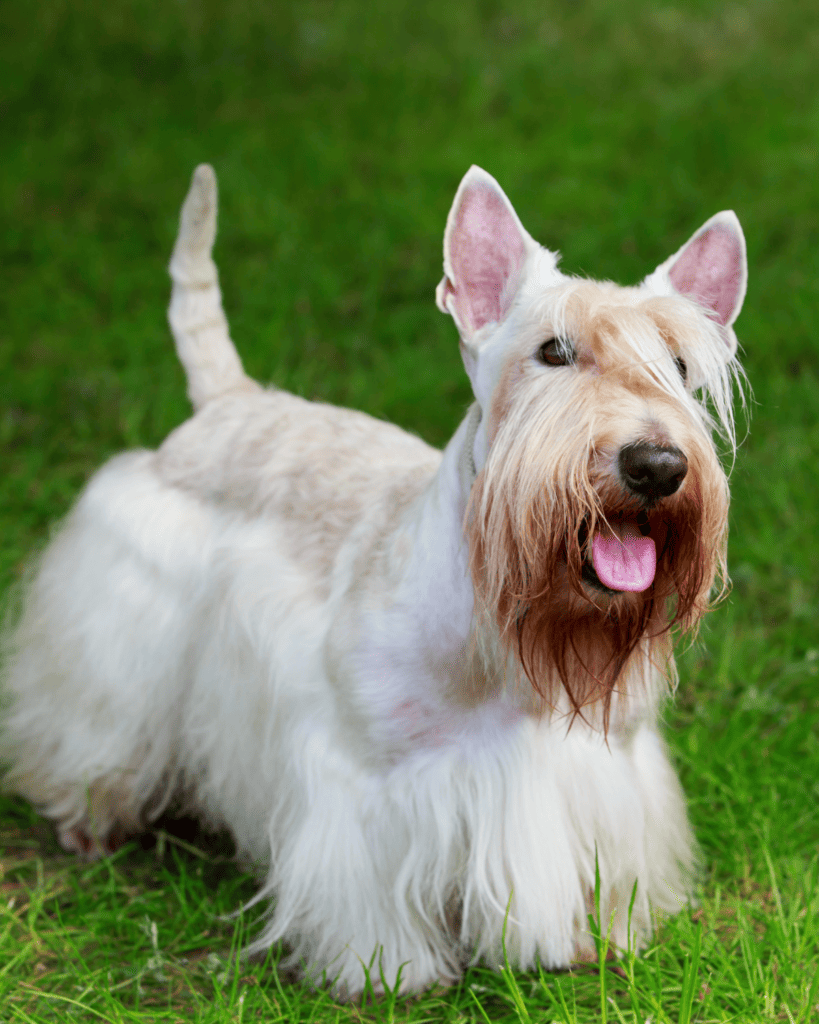Understanding the Role of Breed Characteristics in Training Approaches

Understanding the Role of Breed Traits in Dog Training
When embarking on the journey of dog training, it is essential to appreciate the distinctive characteristics of different breeds. Each breed is a product of its history, purpose, and physical attributes, which collectively influence how effectively a dog can be trained. This understanding not only informs training techniques but also enhances the bond between the trainer and the dog.
One pivotal element in training is the dog’s energy level. Breeds like the Border Collie, originally bred for herding, are renowned for their boundless energy and need for rigorous exercise. Owners of these dogs often find that conventional training methods, which may suffice for calmer breeds, fall short. For example, engaging a Border Collie in agility training or interactive games can both channel their energy and deepen their training experience. On the other hand, breeds such as Bulldogs possess a more relaxed disposition, requiring less intense physical activity, which makes training sessions shorter yet potentially just as impactful.
Another critical factor is temperament. Breeds like Golden Retrievers are celebrated for their friendliness and eagerness to please. This inherent desire to satisfy their owners can make them relatively easy to train with positive reinforcement techniques. In contrast, independent breeds, such as Afghan Hounds, tend to be more aloof and may require more persistence and creativity in training approaches. Trainers working with these breeds may benefit from integrating fun, engaging activities that pique their interest, fostering a willingness to learn.
The intelligence of a breed also immensely shapes training methodologies. For instance, Poodles are frequently recognized for their high intelligence, enabling them to grasp commands swiftly. This intelligence means that Poodles often thrive in environments that challenge their minds, such as learning tricks or participating in competitive obedience. In contrast, less naturally inclined breeds may necessitate additional time and varied techniques, illustrating that the adaptability of training methods can lead to better outcomes.
As dog owners and trainers explore these breed-specific elements, they embark on a path rich with learning and connection. Tailoring training methods to align with a dog’s innate characteristics can significantly improve their training experience. Such an approach not only aims for effective results but also cultivates a deeper understanding and empathy towards the dog’s needs.

This exploration of breed characteristics aims to equip trainers and owners with the insights necessary to foster more harmonious relationships with their dogs. By recognizing these nuances, dog training can transform into a mutually enriching experience, paving the way for strong bonds and well-behaved companions.
LEARN MORE: Click here for insights on balanced nutrition
Factors Influencing Training Based on Breed Characteristics
To fully grasp the role of breed characteristics in training approaches, it is imperative to delve deeper into specific areas that significantly impact training effectiveness. Traits such as energy levels, temperament, intelligence, and even socialization tendencies collectively shape how different breeds respond to training techniques.
Energy Levels play a crucial role in defining how a dog interacts with its environment, including their training experience. High-energy breeds typically require a different approach compared to their more laid-back counterparts:
- High-Energy Breeds: Dogs like the Belgian Malinois and Siberian Husky thrive on physical activity. Training for these breeds often includes more dynamic exercises, incorporating play and physical challenges to maintain their focus and enthusiasm.
- Moderate-Energy Breeds: Breeds such as Labrador Retrievers can balance energy and calmness, allowing for a versatile approach in training which may include a mix of physical and mental challenges.
- Low-Energy Breeds: Basset Hounds and Shih Tzus, for instance, can sometimes be more sedentary. Training sessions for these dogs may emphasize shorter bursts of activity paired with gentle reinforcement to maintain interest.
Temperament is another pivotal characteristic that influences training approaches. Understanding whether a breed is prone to be more dominant, submissive, anxious, or confident can tailor training dramatically. Take, for example, the key temperament traits:
- Eager to Please: Breeds like Golden Retrievers might excel in training due to their friendly disposition and inherent desire to make their humans happy. These dogs often respond well to positive reinforcement, making them ideal candidates for conventional training methods.
- Independent Nature: Breeds such as Basenjis or Shiba Inus tend to have a strong sense of autonomy, often requiring innovative and creative training strategies. To engage these dogs, trainers might employ more persistent, consistent methods that respect their independent spirit.
Intelligence amid breed differences significantly impacts training speed and capability as well. Breeds such as Border Collies and Poodles are famous for their quick and intelligent learning capabilities. Their cognitive abilities facilitate complex training routines and skills acquisition, making them ideal candidates for advanced obedience and agility training. Other breeds may demonstrate a slower learning pace but can succeed with patience and consistent training.
Socialization is also impacted by breed characteristics. Some breeds may have strong protective instincts, while others might display a natural affinity for interaction with various people and animals. Dogs that are more social, like Cocker Spaniels, often benefit from training that involves community interactions, helping them to integrate well into various environments.
Overall, an understanding of these factors aids trainers and owners in adapting their methods to better suit the specific needs of their breeds. By recognizing and appreciating the unique traits of each breed, dog training can evolve into an enriching experience that not only enhances obedience but also fosters a strong, lasting bond between human and canine.
| Breed Characteristics | Training Implications |
|---|---|
| Temperament | Understanding the dog’s temperament helps tailor training methods that resonate with their natural behaviors. |
| Physical Abilities | Different breeds have varying levels of stamina and agility, which can influence the type of exercises incorporated into training. |
| Intelligence Levels | Certain breeds are known for their quick learning capabilities, thus requiring different approaches to avoid boredom during training. |
| Prey Drive | A dog’s natural instinct can affect their focus during training, making it crucial to understand how to channel this drive effectively. |
Understanding the intricacies of breed characteristics is essential for effective training. For instance, breeds with a strong prey drive may benefit from specific distractions that can harness their focus during sessions. Meanwhile, dogs that are highly intelligent need mentally stimulating challenges rather than repetitive commands, which can lead to disengagement. If you consider the temperament of a dog, it shapes how they respond to different training strategies. For example, a confident breed may thrive with assertive methods, while a more anxious breed may require a gentle approach to foster trust and cooperation. Identifying these traits helps create a personalized training plan, enhancing the bond between dog and trainer.Moreover, recognizing the physical abilities inherent in different breeds allows for a more dynamic and rewarding training experience. Tailoring your approach based on these specific characteristics not only leads to better results but also deepens your understanding of your dog’s unique behavior and needs. For dog trainers and owners seeking to improve their training efficacy, delving deeper into breed characteristics is an enlightening journey that paves the way for greater success and satisfaction in training sessions.
DISCOVER MORE: Click here to learn how natural supplements can enhance your pet’s health
Additional Considerations in Breed-Specific Training Techniques
In addition to energy levels, temperament, intelligence, and socialization tendencies, other breed characteristics also play a significant role in shaping effective training approaches. Understanding these elements can lead trainers to more successful outcomes and create a more harmonious relationship between humans and their canine companions.
Breed Specific Behaviors can largely influence how a dog reacts to different training methods. Certain breeds exhibit specific behavioral traits that impact how they engage with training scenarios. For example:
- Herding Instincts: Breeds like the Australian Shepherd display strong herding instincts which can translate into a tendency to nip at heels or chase objects. Trainers may find success in redirecting these behaviors into positive reinforcement strategies that channel their natural instincts into activities like agility or herding games.
- Guarding Traits: Breeds such as Rottweilers and Doberman Pinschers possess inherent protective instincts, often requiring a training approach that emphasizes confidence-building and control. This helps to mitigate excessive guarding behaviors, ensuring these dogs can differentiate between potential threats and everyday interactions.
Size and Physicality are also critical factors in training effectiveness. The physical attributes of a breed can shape not only the manner of training but also the methodology employed. For instance, larger breeds may require more space and strength considerations in training methods:
- Large Breeds: Great Danes and Mastiffs may necessitate a gentler approach due to their size and strength. Trainers need to focus on establishing clear boundaries and reinforced behavior, using stamina-building exercises that both challenge and maintain their interest.
- Small Breeds: Conversely, smaller breeds like Chihuahuas or Pomeranians may require training that incorporates more social skills and interaction due to their natural inclination to engage with their surroundings energetically. Techniques that emphasize socialization with other dogs and people can lead to positive outcomes.
Health Considerations tied to breed characteristics are another key aspect when developing training strategies. Some breeds have predispositions to certain health issues that may affect their training potential. For example:
- Brachycephalic Breeds: Breeds such as Bulldogs and Pugs often face breathing difficulties due to their short snouts. Training for these dogs may need to prioritize shorter sessions and carefully monitored physical activity to prevent health complications.
- Joint Issues: For breeds prone to joint problems, like German Shepherds or Labrador Retrievers, training approaches might emphasize low-impact exercises that ensure proper physical development while safeguarding against injury.
Age and Developmental Stages are also pivotal in tailoring training approaches according to breed characteristics. Puppies require different methods than older dogs, regardless of the breed. Some breeds mature faster than others; for instance, a Boxer may need structured training focused on impulse control at a young age due to high energy levels, while an older breed like a Cavalier King Charles Spaniel may be more suited for a gentle introduction to agility training.
This understanding of breed characteristics can undoubtedly enrich the training journey, ensuring that both the dog and owner experience an engaging and successful training process. Recognizing the complexities in how these factors interweave can help dog trainers adopt tailored strategies that not only teach obedience but also nourish the innate attributes of each breed, ultimately fostering a more profound connection between humans and their furry friends.
DISCOVER MORE: Click here for sustainable pet accessory tips
Conclusion: The Path to Tailored Training
In summary, effectively understanding the role of breed characteristics in training approaches is essential for achieving successful outcomes in dog training. Each breed comes with its unique set of traits—be it behavioral tendencies, physical abilities, or health considerations—that significantly influence how they respond to training methods. Tailored approaches that take these factors into account not only enhance the learning experience for the dog but also strengthen the bond between pet and owner.
Furthermore, acknowledging the specific needs of breeds, such as their innate drive for certain activities or their vulnerability to health issues, allows trainers to craft programs that promote both physical and mental well-being. This nuanced understanding fosters a training atmosphere where dogs are happier and more engaged, ultimately resulting in better social behavior and obedience.
As you embark on your dog training journey, consider diving deeper into understanding the specific characteristics of your pup’s breed. The insights gained will guide you towards more effective strategies that honor their traits while nurturing a rewarding learning experience. With the right approach, not only can you develop a well-trained companion, but you can also facilitate an enriched, fulfilling relationship that celebrates the exceptional nuances of canine companionship.
By investing in this knowledge, dog owners and trainers alike can unlock the potential within each breed, paving the way for training practices that respect and elevate the unique essence of each canine friend.


